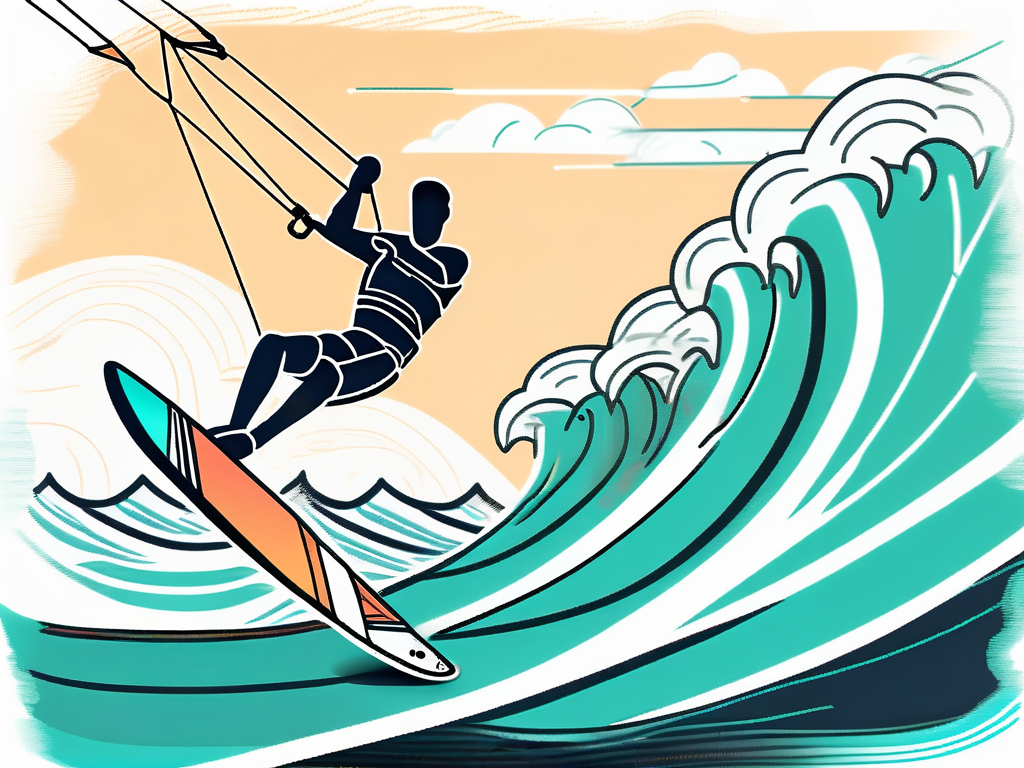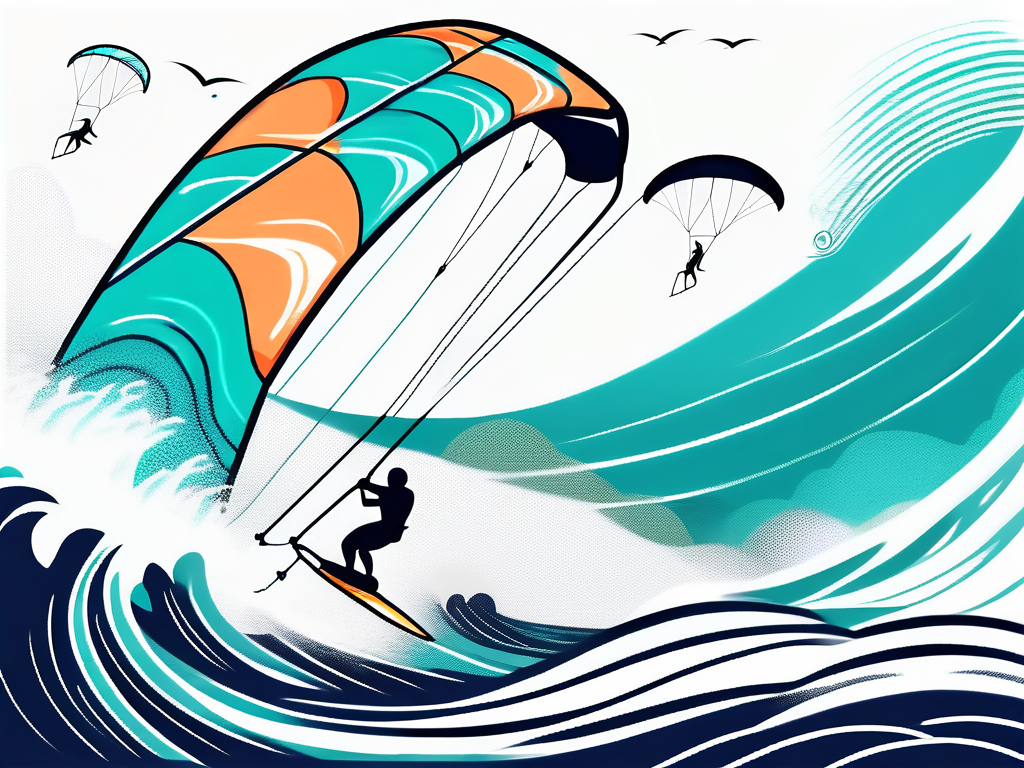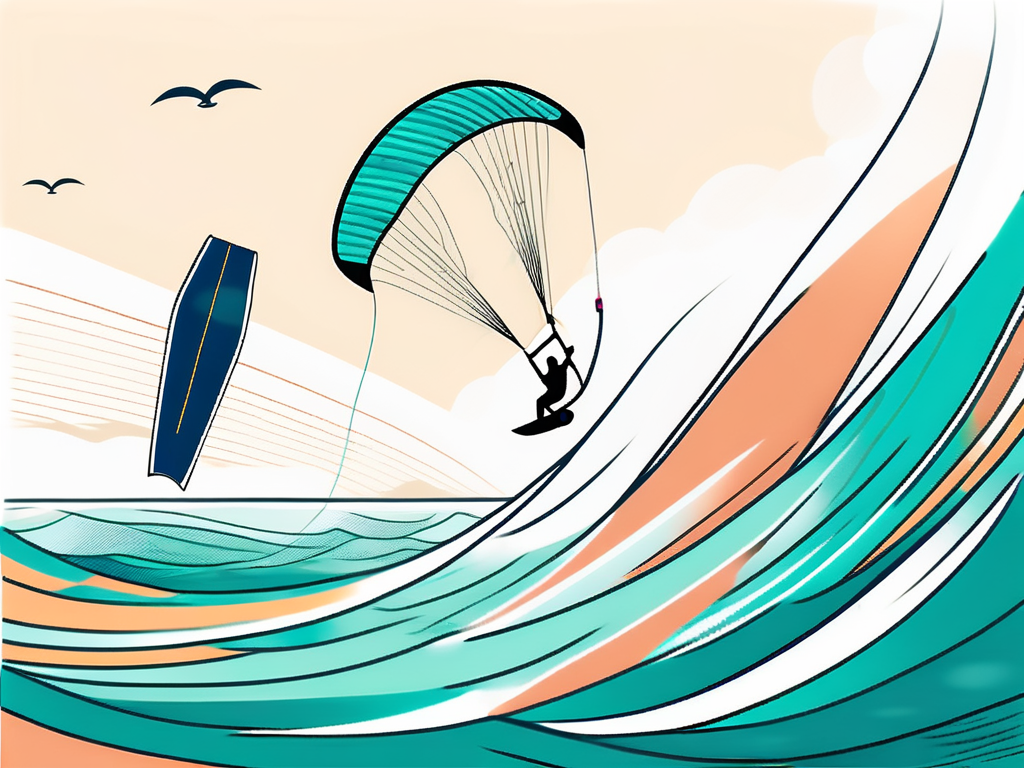The Ultimate Beginner's Guide to Kitesurfing
Kitesurfing is an exhilarating water sport that combines elements of surfing, windsurfing, and kite flying. If you've always wanted to try it but don't know where to start, you've come to the right place. In this ultimate beginner's guide to kitesurfing, we'll demystify the sport, teach you essential skills, and help you navigate the world of kitesurfing lessons and equipment.
Demystifying Kitesurfing: A Beginner's Guide
Understanding the Basics of Kitesurfing
Before diving into the world of kitesurfing, it's important to have a basic understanding of the sport. Kitesurfing involves harnessing the power of the wind to propel yourself across the water on a board. The main equipment you'll need is a kite, a board, and a harness.
Learning how to control the kite is crucial. It requires mastering basic techniques such as launching, landing, steering, and depowering the kite. With time and practice, you'll be able to ride the wind effortlessly.
Witnessing the Thrills of Kitesurfing in Action
If you've never seen kitesurfing in action, prepare to be amazed. Imagine soaring through the air, performing jumps, spins, and tricks while the wind carries you effortlessly. It's a truly adrenaline-pumping experience that attracts people from all walks of life.
Whether you're drawn to the thrill of catching big waves or the freedom of cruising along calm waters, kitesurfing offers something for everyone. Plus, the sense of accomplishment and freedom you'll experience as you progress in the sport is truly gratifying.
Essential Skills for Kitesurfing Success
Learning to kitesurf requires a combination of physical skills, mental focus, and good judgment. Here are a few essential skills you'll need to develop:
- Balance: Maintaining balance on the board is crucial. You'll need to find your center of gravity and learn how to distribute your weight properly.
- Coordination: Kitesurfing requires coordination between your upper and lower body. You'll need to synchronize your movements to control the kite and navigate the water.
- Water Skills: Being comfortable in the water is essential for kitesurfing. Practice swimming, treading water, and recovering your board in case of a fall.
Developing these skills takes time and practice, but with perseverance, you'll soon be riding the waves like a pro.
The Fitness Level Required for Kitesurfing
Kitesurfing is a physically demanding sport that requires a reasonable level of fitness. While you don't need to be a super athlete, having a basic level of cardiovascular fitness and strength will greatly enhance your kitesurfing experience.
Engaging in activities such as swimming, cycling, and core strengthening exercises will help you prepare your body for kitesurfing. Additionally, developing good flexibility and stamina will increase your endurance and reduce the risk of injury.
Navigating the World of Kitesurfing Lessons
Finding the Right Kite School for You
When it comes to learning kitesurfing, professional instruction is key. It's important to find a reputable kite school with qualified instructors who can guide you through the learning process and ensure your safety.

Research local kite schools and read reviews to find one that matches your needs and budget. Consider factors such as instructor-to-student ratio, teaching methods, and safety protocols.
The Importance of Professional Instruction in Kitesurfing
While it may be tempting to teach yourself kitesurfing, it's essential to seek professional instruction. An experienced instructor will teach you vital safety techniques, help you understand wind conditions, and provide personalized feedback to accelerate your learning curve.
Kitesurfing can be dangerous without proper instruction, so don't underestimate the importance of professional guidance. It's well worth the investment for your safety and progress as a kitesurfer.
Building Your Kitesurfing Kit: What You Need
Must-Have Gear for Beginner Kitesurfers
As a beginner kitesurfer, you'll need a few essential pieces of gear to get started:
- Kite: Choose a kite suitable for beginners, with a moderate size and good stability.
- Board: Select a board that matches your skill level and riding style. Beginner-friendly boards are usually wider and offer more stability.
- Harness: A comfortable harness will distribute the pull from the kite and reduce strain on your arms and back.
Investing in quality gear will enhance your kitesurfing experience and contribute to your safety on the water. Consult with experienced riders or visit a specialized shop to find the equipment that suits you best.
Mastering the Art of Kitesurfing: What to Expect
As you progress in kitesurfing, you'll start to experience the sheer joy and freedom that the sport has to offer. Here are a few things to expect as you master the art of kitesurfing:

- Confidence on the Water: As you gain experience, your confidence will grow. You'll become familiar with wind conditions, tack and jibe smoothly, and have a better understanding of your equipment.
- Exploring New Spots: The beauty of kitesurfing is that it can take you to breathtaking locations around the world. From secluded tropical beaches to bustling kitesurfing hotspots, the possibilities are endless.
- Connecting with Nature: Kitesurfing allows you to connect with nature on a deeper level. You'll feel the power of the wind and the rhythm of the waves as you glide across the water, creating a unique sense of harmony.
Remember, kitesurfing is a journey, and there's always room for improvement. Don't be discouraged by falls or challenges along the way. Embrace each experience as a learning opportunity and enjoy the ride.
Progressing in Kitesurfing: The Journey to Riding the Waves
Once you've mastered the basics of kitesurfing, you'll likely want to progress to riding the waves. Wave riding introduces a whole new dimension to the sport, combining the thrill of kitesurfing with the challenge of reading and harnessing the power of the waves.
Before attempting wave riding, it's crucial to have a solid foundation in board control and kite handling. Take your time to practice in different conditions and build up your skills gradually.
When you're ready to tackle the waves, seek guidance from experienced wave riders who can teach you techniques such as bottom turns, top turns, and wave selection. With patience and persistence, you'll soon be riding the waves like a pro.
Overcoming Challenges as a Novice Kitesurfer
As a novice kitesurfer, it's normal to face challenges along the way. Here are a few common hurdles you may encounter and how to overcome them:
- Wind Conditions: Different wind conditions require adjustments in kite size and technique. Experiment and seek advice from more experienced riders to understand how to adapt to varying wind speeds and directions.
- Board Control: Mastering board control takes time and practice. Focus on developing your balance, footwork, and edging skills to improve your overall control and maneuverability.
- Persistence: Learning any new sport requires patience and persistence. Don't get discouraged if progress seems slow. Celebrate small victories and be kind to yourself during the learning process.
Remember, every kitesurfer started as a beginner. Embrace the challenges, learn from your mistakes, and keep pushing forward. The reward of becoming a proficient kitesurfer is well worth the effort.
Buying Your First Kitesurfing Equipment: A Guide
Pros and Cons of Purchasing Second-Hand Kitesurfing Gear
When it comes time to buy your own kitesurfing equipment, you may consider purchasing second-hand gear as a cost-saving option. While there are benefits to buying used gear, there are also potential downsides to be aware of:
Pros of Buying Second-Hand Gear:
- Lower Cost: Second-hand gear is often significantly cheaper than buying new, allowing you to save money.
- Immediate Availability: Used gear is readily available, meaning you can start kitesurfing sooner.
- Variety: Buying used gear gives you the opportunity to test different brands and styles before committing to a specific setup.
Cons of Buying Second-Hand Gear:
- Condition: Used gear may have wear and tear, potentially affecting its performance and longevity.
- No Warranty: Second-hand gear usually does not come with a warranty, so you may be responsible for any repairs or replacements.
- Safety: It's essential to thoroughly inspect used gear for any potential safety issues, such as broken lines or faulty parts.
If you decide to buy second-hand gear, do your research, inspect the equipment carefully, and perhaps consult with a more experienced kitesurfer before making a purchase.
Navigating Kitesurfing Regulations: Do You Need a License?
Kitesurfing regulations vary by location, and some areas require a license or certification to kitesurf legally. Here are a few things to consider:

- Local Laws: Research the local laws and regulations in the area where you plan to kitesurf. Check if there are any specific requirements or restrictions regarding kitesurfing.
- Certification Programs: Some countries offer kitesurfing certification programs that provide formal training and qualifications. While not always legally required, these certifications can enhance your skills and safety.
- Safety Measures: Regardless of whether a license is required, it's crucial to prioritize safety. Always assess the conditions, wear appropriate safety gear, and follow proper etiquette on the water.
By following the rules and regulations of the area you're kitesurfing in, you not only ensure your own safety but also help maintain a positive reputation for the kitesurfing community as a whole.
Joining Kitesurfing Communities: Beginner-Friendly Clubs
One of the best ways to accelerate your progress as a beginner kitesurfer is by joining kitesurfing communities and clubs. These clubs offer a supportive and friendly environment where you can learn from experienced riders, share tips and tricks, and make lifelong friendships.
Beginner-friendly clubs often organize group sessions, events, and trips to kiteboarding destinations. By joining these activities, you'll have opportunities to learn from more experienced riders, gain valuable insights, and be surrounded by like-minded individuals who share your passion for kitesurfing.
Top Tips for a Successful First Kitesurfing Lesson
Your first kitesurfing lesson sets the foundation for your future progression in the sport. Here are some tips to ensure a successful and enjoyable experience:
- Choose the Right Conditions: Opt for a lesson on a day with moderate wind and calm waters. Extreme conditions can be overwhelming for beginners.
- Listen to Your Instructor: Pay close attention to your instructor's guidance and follow their instructions carefully. They have the knowledge and experience to keep you safe and help you progress.
- Practice Safety Measures: Always prioritize safety. Wear proper safety gear, keep a safe distance from other riders, and respect the rules and etiquette of the spot.
- Embrace the Learning Process: Learning to kitesurf takes time and practice. Embrace the challenges, trust the process, and have fun along the way.
By approaching your first kitesurfing lesson with a positive attitude and a willingness to learn, you'll lay a solid foundation for your future kitesurfing adventures.
Now that you're equipped with the ultimate beginner's guide to kitesurfing, it's time to embark on your kitesurfing journey. Embrace the thrill, enjoy the freedom, and get ready to experience the unique joy that kitesurfing has to offer. See you on the water!





